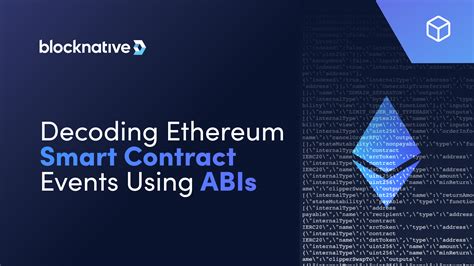Understanding Ethereum of events: contract.events
When working with smart contracts on Ethereum Blockchain, events play a key role in managing data exchange between different contract components. In this article, we will dive into the concept of events in Ethereum contracts and how to use them.
The event structure
In Ethereum, an event is defined by its structure:
`Markdown
event (
Here's the breakdown of each field:
: This is the name of the event.
: arguments that are transferred to the function of events.
: A type of data transmitted to the function of events. In this case, this isnint256.
: The value of the time mark that represents the event.
Treaty.events
In the Ethereum contracts, events are usually used as a functions of a return call. When the event is broadcast, the contract calls for a method defined in its original code (eg,contractual function ()) with a specific argument.
Markdown
MYCONTKRT CONTRACT
Function updatemaxnumber
// Update a new number here ...
Iche
Iche
Updated eventmermber
As you mentioned, the event is called when an update ofMaxnumberis updated:
Markdown
Event update Maxnumbernumbernumbernumbernumbernumbernumbernumbernumbernumbernumbernumbernumbernumbernumbernumbernumbernumbernumbernumbernumbernumbernumbernumbernumbernumbernumbernumbernumbernumbernumbernumbernumber (Indexed Player, Naint Maxnumber, Naint256 Timeline);
This event is broadcast when the contract updates the value ofMaxnumber”.
Using events in your code
When your contract broadcasts updated event of maximum number, you can use the following processing code:
`Javascript
Pragma Solidity ^0.8.0;
MYCONTKRT CONTRACT
mapping (address => nint256) public maxnumbers;
Event update Maxnumbernumbernumbernumbernumbernumbernumbernumbernumbernumbernumbernumbernumbernumbernumbernumbernumbernumbernumbernumbernumbernumbernumbernumbernumbernumbernumbernumbernumbernumbernumbernumbernumber (Indexed Player, Naint Maxnumber, Naint256 Timeline);
Function updatemaxnumber
// Update a new number here ...
Maxnumbers [Player] = Maxnumber;
Emit updatedmaxnumber (Player, Maxnumber, Timeline);
Iche
Iche
`
In this example, “UPDATEMAXNUMAMER” function updates “Maxnumbers” mapping and broadcasts updated maximum number.
Best Practice

When using events in your contract, keep in mind the following best practices:
- Use meaningful events names to avoid confusion.
- Define the return call functions for each event to process its specific logic.
- Provide events in a way that makes sense of your use of use (eg update an internal condition or notification of other components).
- Consider implementing events or masking filtering if necessary.
Understanding how events work in Etherem contracts, you can write a more effective and scalable code that effectively acts with data exchange between different parts of the contract.
using stablecoins cross border transactions
